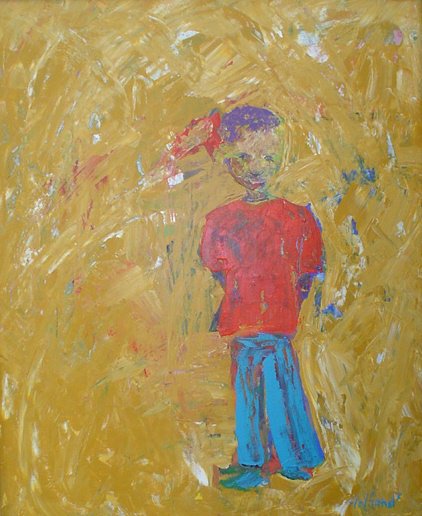
What we do is important. No one else will ever understand how many decisions we make over the course of a day. It must be hundreds. As I reflect each day I count the decisions like rocks weighing my soul. Was that the best response? Did I teach them? What did I do that made it better? The best thing about teaching is that you can get better at it but, only if you want to. So, here is to every teacher who tries to do it better than they did last time. And to every teacher who has inspired a child, even it it wasn’t to become president, but may play an instrument, or like my daughter’s Pre-K teacher did, inspire in my daughter a love of rocks. This is what gets at what we really do. Words like, standards, assessments, points, NCLB, don’t mean much when you look at the world like teachers do. Teachers think in words like, inspire, learn, and wonder.
Here is to the artists of the field because teaching will never be a science, it is too big, wonderful and mysterious for that…
Teaching as an art
Art is about creating the remarkable from the ordinary. It is about raw materials, the history of the discipline, and the tireless pursuit, one might even say obsession, with making something remarkable. When I was a student in art school I gradually drifted towards creating room size sculptures called installations. I hoped that when someone entered an installation they would have an experience that changed them in some way.
To me, this is the definition of teaching. Teaching means to provide students’ experiences that change them in some way. For me it was a natural progression from creating installations to creating classroom environments in preschool. After all, the classroom is your most valuable tool for teaching young children.
Now, as a professional artist I find similarities in the process of teaching and painting. The aspect of teaching young children that is most like painting is the teaching of reading. My students come from poverty. They have very few prior experiences. When I paint I begin with the background, filling in the farthest horizon with aspects of the world that might not even be seen in the final painting. Then I begin to move forward, teaching letters and sounds in multiple ways. All the while I am focusing on these details I am building my students’ desire to read by bringing the literature alive. I am always thinking of the end result but responding to particular areas of a painting’s needs. With my students I am always monitoring the entire class’ progress while paying particular attention to the students the farthest behind and to the students who will light the fire of the desire to read. It is crucial in a painting to bring a painting forward in such a way that it seems like it has arrived, with its own logic and reality fully intact. Without considering the layers of paint under a representation of an object in a painting it is impossible create a painting that is true to itself. Without understanding the varieties and levels of experience a student has had before reading it is impossible to know what a student will understand about reading. When one or two students finally start to read and other students begin to see that they have the potential too it is like getting close to the completion of the painting. It is the most rewarding and the most important. Each mark on the canvas can make the painting better or set it back. It is the same with reading. As a student begins to read it is important that every advancement of their understanding is acknowledged and rewarded.
Teaching is an art because it requires a teacher to dig deep into their soul to find answers. It is not merely skill or technique, a conglomeration of lessons, charts, and assignments. It can best be described as knowing what to do when what you never imagined could happen, happens. It is important also to remember that the false dichotomy of art versus science is indeed false. Art and science are indeed two branches of the same tree of understanding. Each providing it’s unique light into reality.
Frank McCourt, in his memoir “Teacher Man”, describes just this type of situation. It happens on his first day, when a student throws a sandwich at another student and it lands on the floor of McCourt’s technical high school English classroom. If he were merely a technician he would mentally skim threw the training he received at teacher school, find the heading “What to do about flying food,” and perform the procedure. Of course that was not covered. He knew he did not have the students’ attention yet. He knew that his next move would decide his relationship with his students. He could have made the kid pick it up, he could have picked it up, he could have called the principal, he could have done a great many things but he knew he had to find the one thing that would accomplish his goal of creating a relationship with his students so he could teach. He had to innovate. So, he ate the sandwich. Was it the best move? That could be debated. The principal didn’t think so. But, it accomplished his goal. After he ate the sandwich he had them. They were putty, paint, clay, in his hands. He could teach. He was an artist.
